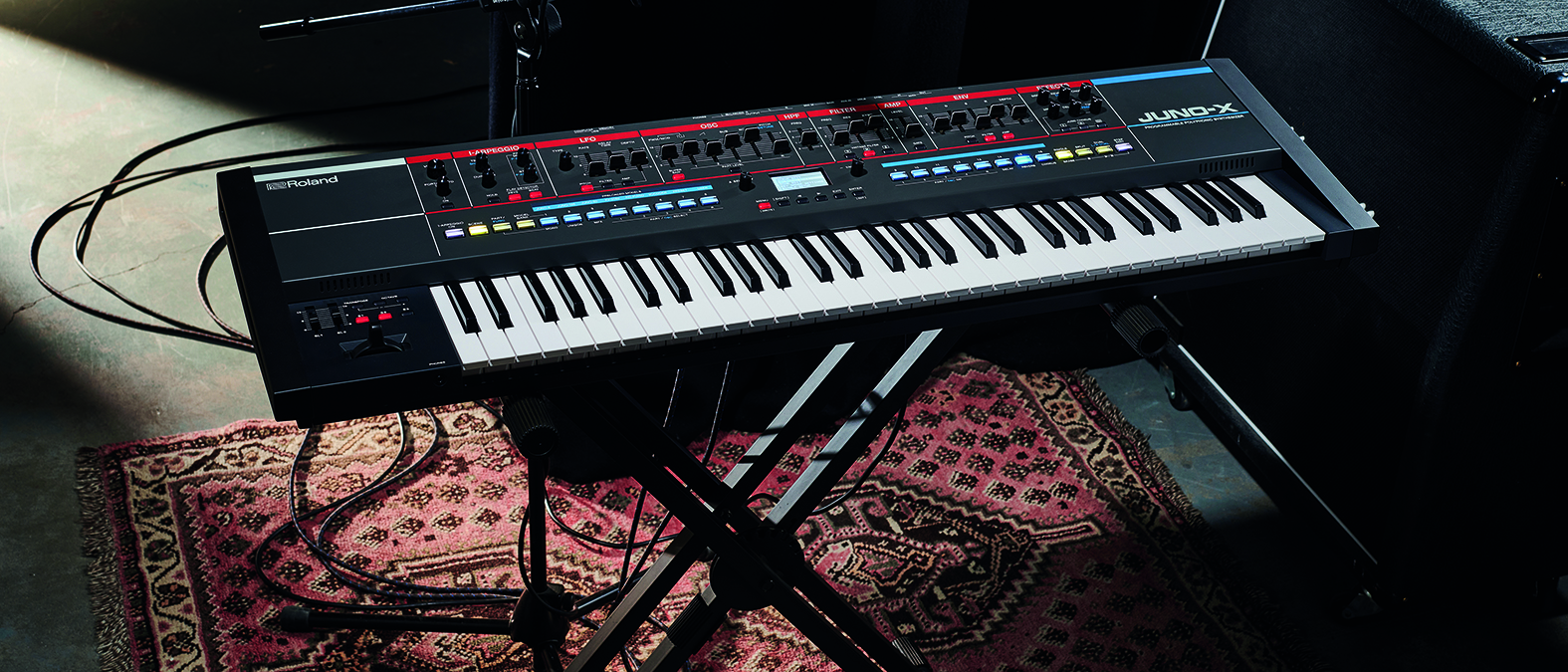MusicRadar Verdict
Ideal for those who’ve always wanted a Juno-60 or 106, this delivers the spirit of those original synths and much more besides.
Pros
- +
Oodles of original Juno mojo in a solidly built chassis.
- +
Stunning looks and familiar layout.
- +
Immense, authentic sound.
Cons
- -
Tiny screen can be confusing.
- -
Speakers are underwhelming.
- -
Steep learning curve for in-depth sound design.
MusicRadar's got your back
Roland Juno-X: What is it?
Roland’s Juno-106 analogue polysynth, launched in 1984, holds a cherished place. One of the first truly affordable MIDI-equipped polysynths, and an acknowledged cornerstone of ’80s music, the 106 remains sought after. Having already revived the equally legendary Jupiter line with the Jupiter X and Xm, we now get the Juno-X.
With the current market price for a decent original Juno-106 around $2,000, what does the Juno-X offer for similar money? Well, nestling under that beguiling exterior lies not just a faithful digital recreation of an original 106, but also the next-generation Juno-X engine, a Juno-60 model, hundreds of sounds from the classic XV-5080 module and RD piano series, a vocoder section, plus the option of more downloadable Roland Model Expansions.
The Juno-X certainly has the wow factor. It feels reassuringly heavy, the physical dimensions are comparable to the Juno-106, and it looks stunning. The classic red, white and blue livery immediately identifies it as a new arrival in the Juno family, with the famous “Programmable Polyphonic Synthesizer” legend. The chassis is solid aluminium and even the chiselled plastic end cheeks are faithful to the original, making the unit easy to lug around despite being built like a tank.

The front panel is bristling with sliders and multicoloured illuminated buttons, in a layout reassuringly familiar to any previous Juno user. Meanwhile, there’s a proper IEC mains connector, balanced and unbalanced stereo audio outputs, a stereo audio input and traditional 5-pin MIDI IN/OUT ports. There are inputs for expression and sustain pedals, a mic input for the vocoder function, and a pair of USB ports for backing up settings to a USB stick, or connecting to a computer for use as a MIDI controller or a 14-input, 4-output audio interface. You’ll also find two well placed headphone ports.
We were surprised to find that this synth has built-in speakers, unusually for a pro synth. Through these you can stream music from a mobile device via Bluetooth to jam along.
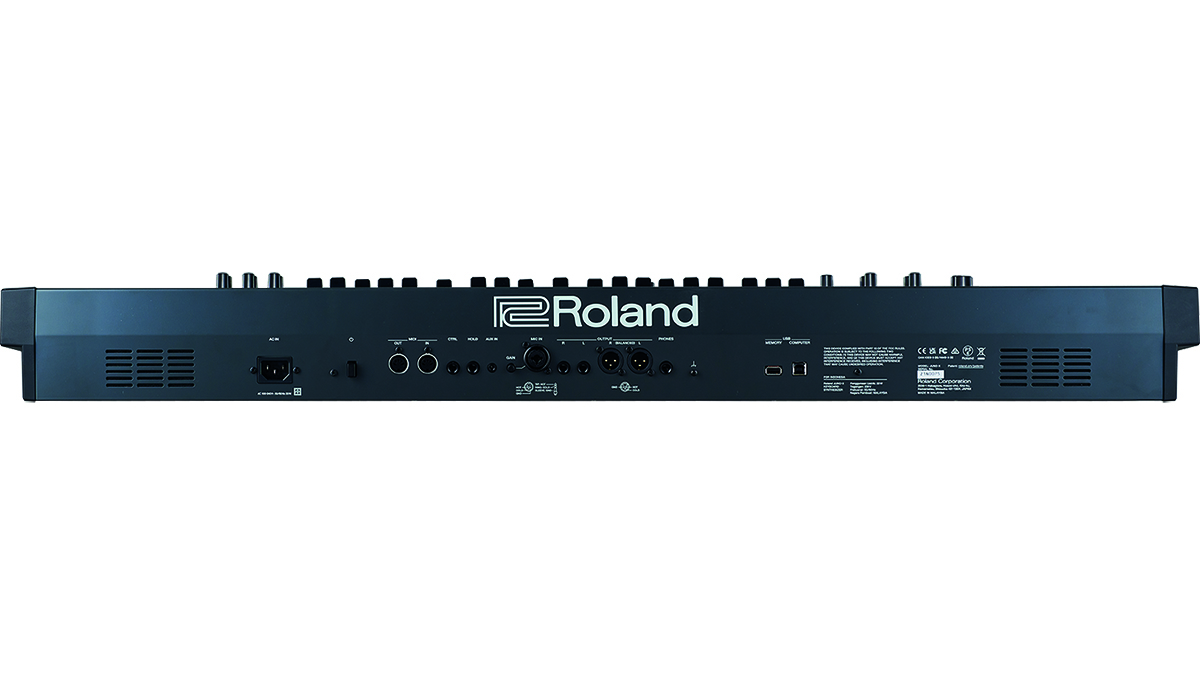
Roland Juno-X: Performance and verdict
The Juno-X’s 61-key keyboard is a high-quality synth action drafted over from the Fantom-0 series and is wonderful to play, with a premium feel and just the right springiness to facilitate accuracy on fast runs. Channel aftertouch is present, although you really have to lean in hard to activate it.
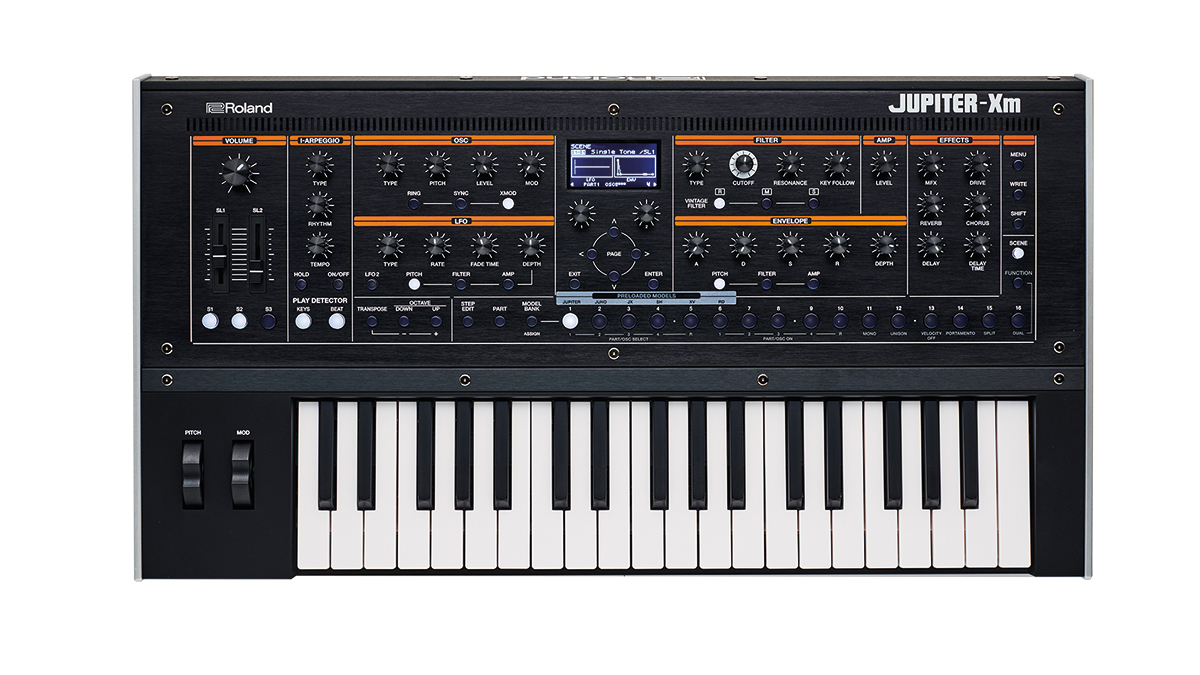
• Roland Jupiter-Xm
Roland’s ZEN-Core-based modern derivation of its legendary Jupiter line squeezed into a compact, portable battery-powered format. Throw in another £800 if you want the full-size Jupiter X.
• Roland Fantom-06
Another ZEN-Core-based synth from Roland, but with more workstation capabilities and a large colour touchscreen.
• Roland System-8
Roland’s flagship ‘Plug-out’ synth is built around its Analogue Circuit Behaviour tech (found in most Boutique synths), arguably surpassed by the newer ZEN-Core engine.
Anyone who’s ever played an original Juno will enjoy the fact that Roland’s combined pitch bend and modulation lever has not only survived, it’s actually an improvement over the original, with more depth of travel in the modulation plane. More performance control is offered by two adjacent sliders and three switches that can place access to any parameter you like in easy reach of your left hand.
Want all the hottest music and gear news, reviews, deals, features and more, direct to your inbox? Sign up here.
Elsewhere, there’s a brand new Supersaw oscillator type and three different filter types to choose from, (labelled R for Roland, M for Moog and S for Sequential we’re guessing), plus there’s an authentic stereo chorus with a new third mode that combines the effect of the first two. There’s also a copious selection of modern multi-effects on tap, with dedicated hardware controls for reverb, drive and delay. Finally, the I-Arpeggiator imbues your playing with intelligent input based on the pitch or rhythm of your playing.
There are apparently over 4,000 preset tones in the Juno-X, including authentic digital recreations of the original Juno-60 and 106 factory patches, and sound banks from the XV5080 module, Roland’s flagship synth module from the early 2000s, As someone who used a JV-1080 extensively in the past and still owns an XP-80, we can attest that these are very faithful recreations. You also get all the classic Roland TR-series drum machine sounds to boot.
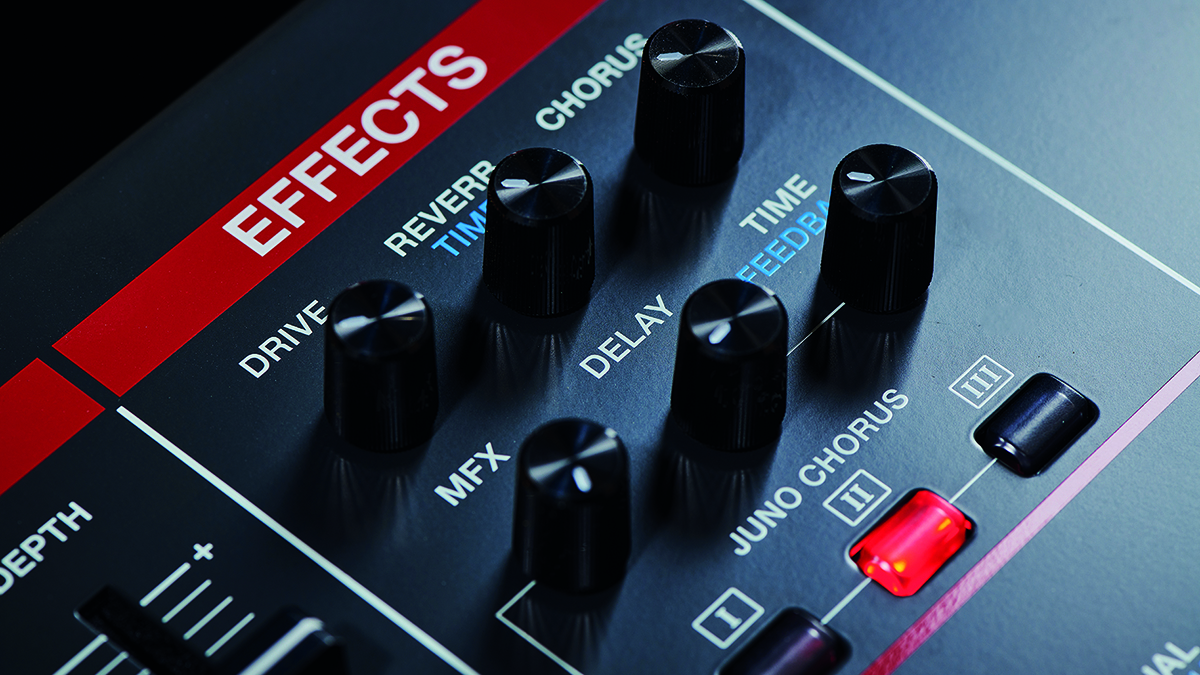
Plug a dynamic mic into the port on the back (there’s no phantom power support for condenser mics) and activate the vocoder model and you’ll be rewarded with a real treat for the ears. The vocoder sounds incredibly clear, full and wide, although not as close to the tone of the VP-330 as you might expect. There are only two sounds available – Vocoder 1 is the brighter, more digital-sounding of the two, while Vocoder 2 has a warmer, fuller sound but is no less distinct for it.
Flicking through the list readily brings a smile to the face of any Juno aficionado
The original Junos found themselves heavily favoured for bass and pad sounds, so it’s no surprise to find a lot of the available sounds in the Juno-X devoted to these categories. Brassy pads, lush strings, rubbery plucks and plonky basses can be found in abundance, and flicking through the list readily brings a smile to the face of any Juno aficionado, while the Juno-X engine backs these up with a selection that includes edgier, more modern sounds.
The Juno-X doesn’t score too highly on ‘approachability’. Sounds that you play from the keyboard are called tones, and these are recalled and stored in a part, together with settings such as pan and EQ. You can then layer up to five parts together into a scene. Scenes also store sequence data, effects and I-Arpeggio settings, with complex scenes sometimes reminiscent of the auto-accompaniment mode on an arranger keyboard.

On power-up, the Juno-X defaults into Scene mode, so individual sound selection is not obvious. We had to embark on a substantial learning curve to figure out how its sounds and patches are structured. The ZEN-Core synthesis technology under the hood means a generous 256 notes are on tap polyphony-wise, although polyphony does vary according to which engine you’re using. There’s a TR-style step-edit mode for sequencing I-Arpeggio patterns, especially useful for use with the built-in drum sounds. This transforms the two rows of buttons into step entry buttons, à la TR-808.
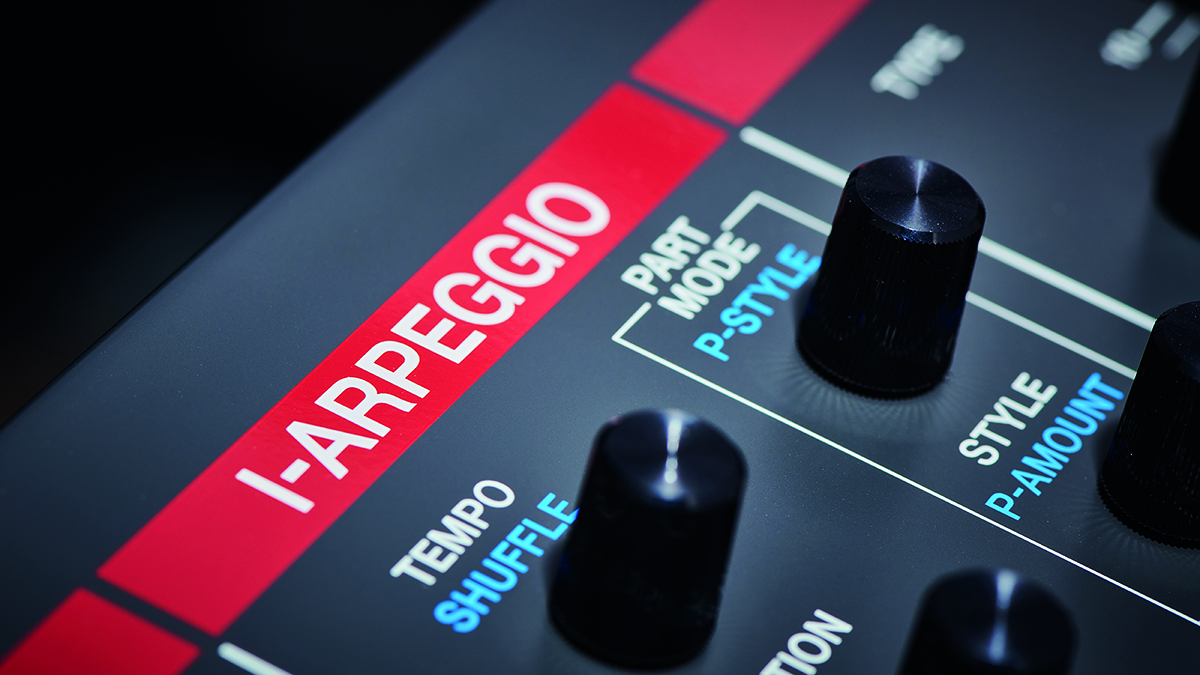
The front panel controls are only relevant to the selected part, but you can select multiple parts at once and have the sliders control everything together. The layout as it stands is tailored towards the Juno-X engine, and labelled functions will change according to the selected synth model, but touching any slider will bring up its current function and value on the central screen. The ability to tweak parameters individually on the fly is a wonderful thing, and the sliders themselves are high-res, 1,024-step units.
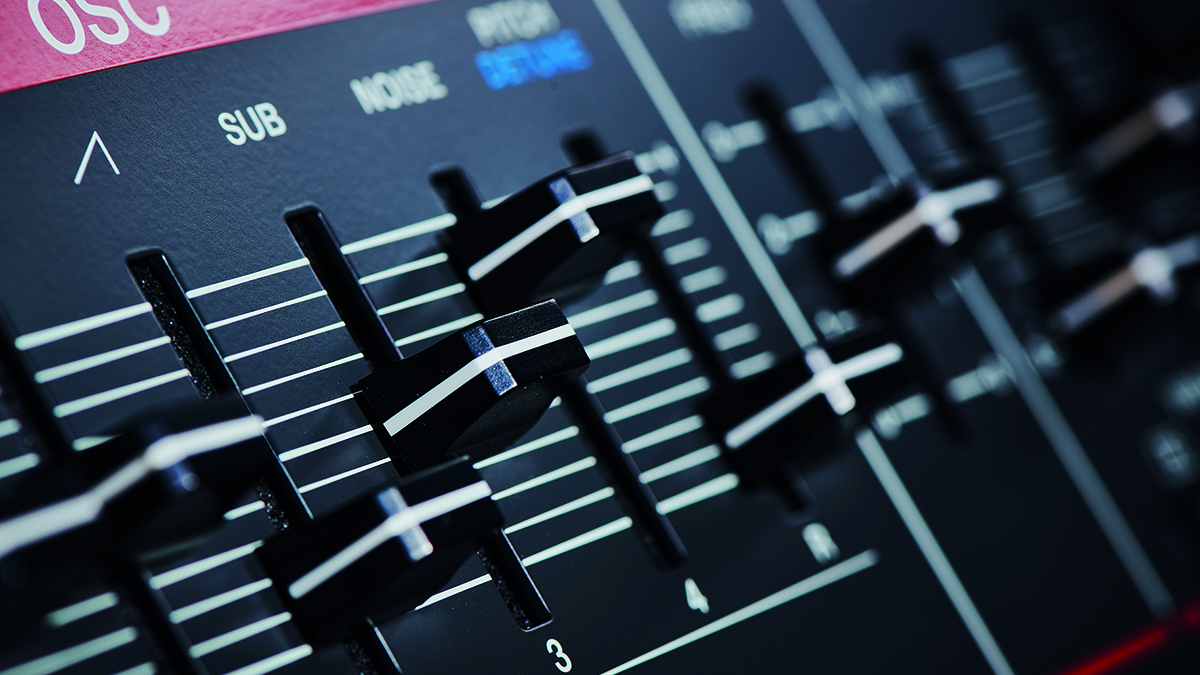
Issues? Well, the slider controls are tricky to make out under dim stage lighting conditions. The built-in speakers lack low end and are really only suitable as a last resort if you have nothing else available to monitor through. The tiny screen often appears congested, considering the work it has to do to effectively grant access to the many hundreds of parameters contained within a synth of this depth.
However, there are two different software editing options available for the Juno-X. One is Roland’s dedicated free Juno-X editor, which syncs with the synth in real time over USB, turning any available computer into a large colour display, while the other is Roland’s Zenology PRO software synth plugin. At least the screen is in the optimum position on the Juno-X, rather than the bizarre upper-left corner location Roland used for the design of the Jupiter-X.
Despite appearances then, there’s nothing truly analogue about the Juno-X. Some would argue that it’s simply another fancy hardware container for the ZEN-Core engine. Yet the Juno-X is somehow much more than that, connecting with the user on another level that makes it more than the sum of its parts.
Roland claims that it fuses authentic vintage spirit with modern creative power, and we’d have to agree, but despite definitely needing to reach for the manual to get the most from it, to have this machine under your fingers, looking and sounding the way it does, is undeniably inspiring, particularly if synthwave or ’80s-tinged electronic pop is your bag
MusicRadar verdict: Ideal for those who’ve always wanted a Juno-60 or 106, this delivers the spirit of those original synths and much more besides.
Roland Juno-X: The web says
"If everybody really needs a Juno, then the Juno-X may well be your ticket to one."
MusicTech
Roland Juno-X: Hands-on demos
RolandChannel
Andertons Synths, Keys and Tech
Alamo Music Sound Lab
Roland Juno-X: Specifications
- KEY FEATURES: ONE GENERATION: Various ZEN-Core MODEL sound engines (Juno-60, Juno-106, Juno-X, XV5080, RD-Piano, Vocoder).
- KEYS: 61 velocity-sensitive, synth-action with channel aftertouch.
- DIMENSIONS: 1,072 x 333 x 118 mm.
- WEIGHT: 11.6 kg.
- CONTACT: Roland
Dave has been making music with computers since 1988 and his engineering, programming and keyboard-playing has featured on recordings by artists including George Michael, Kylie and Gary Barlow. A music technology writer since 2007, he’s Computer Music’s long-serving songwriting and music theory columnist, iCreate magazine’s resident Logic Pro expert and a regular contributor to MusicRadar and Attack Magazine. He also lectures on synthesis at Leeds Conservatoire of Music and is the author of Avid Pro Tools Basics.
